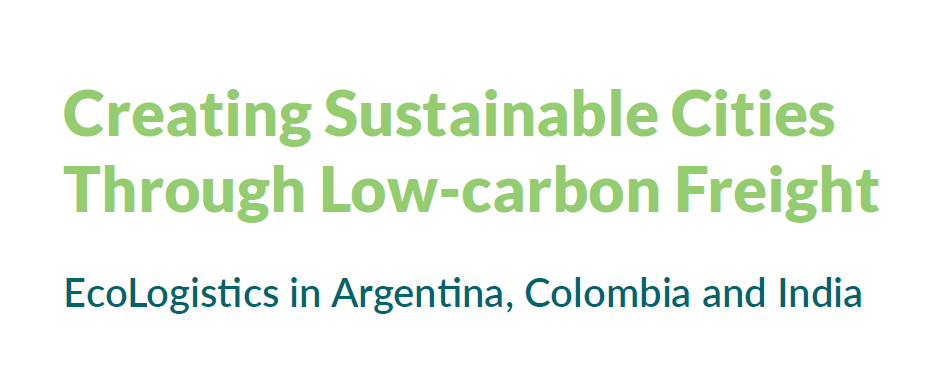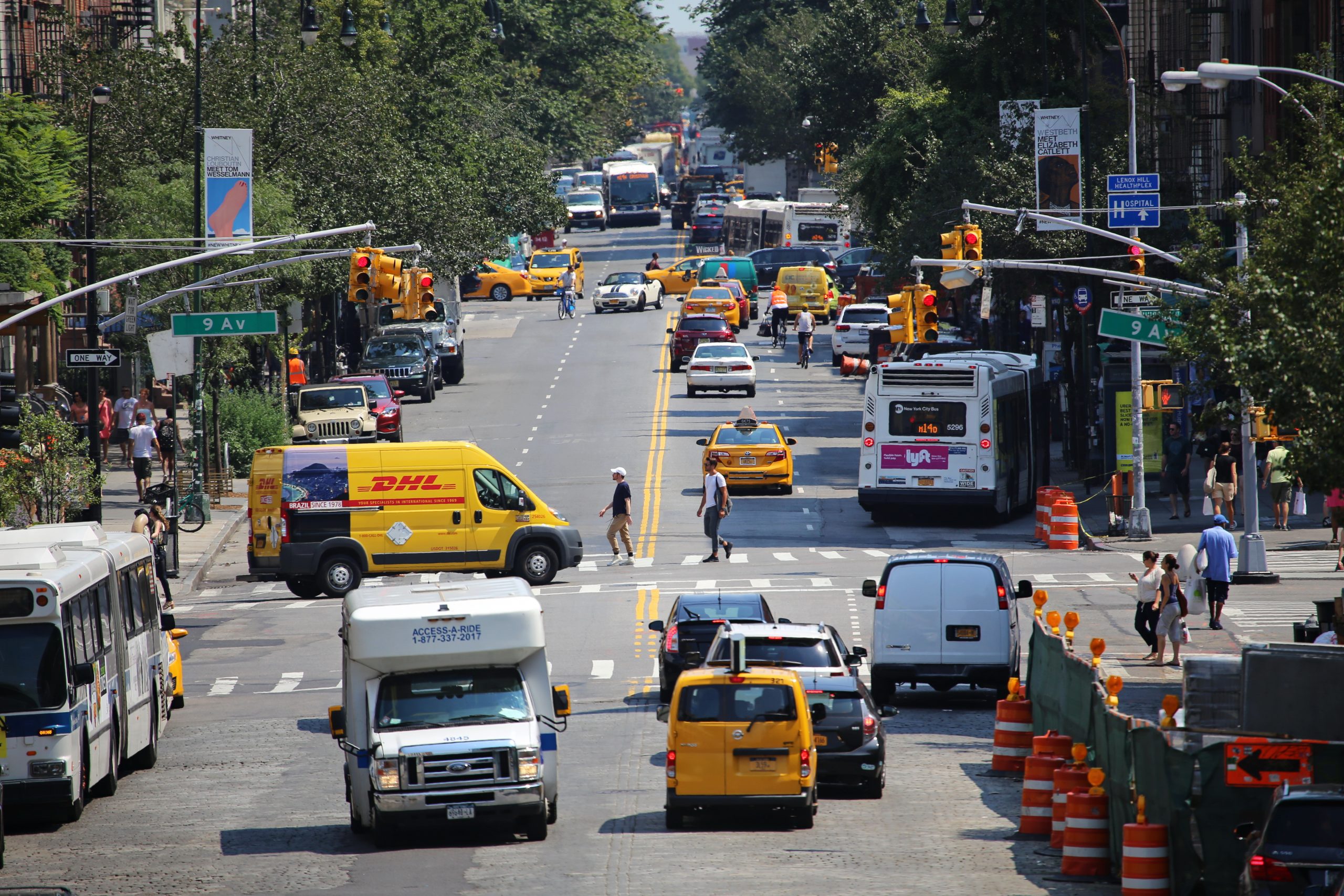
Freight transport demand is expected to triple and its associated emissions to more than double by 2050 compared to the 2015 levels, if left unchecked.
To reverse this trend, cities and companies need to turn promises into actions.
ICLEI PRESENTS:
Creating sustainable cities through low-carbon freight: EcoLogistics in Argentina, Colombia and India (EcoLogistics Report 2021)
TIME IS RUNNING OUT
Freight transport and emissions are increasing rapidly and, until now, cities were not equipped to handle the associated challenges. Only about 21 percent of the Nationally Determined Contributions (NDCs) highlighting transport refers to freight transport. Road transport is by far the dominant source of global freight emissions: It made up 62 percent of the freight transport emissions in 2015 and is predicted to rise by 55 percent by 2050.
As cities continue to grow at an unprecedented rate, increasing freight movements present unique urban challenges including congestion, air pollution, traffic accidents and a host of other negative impacts on the mobility system.
URBAN FREIGHT DATA GAPS
As governments set ambitious targets to decarbonize transport, it is critical that they use data to evaluate and make science-based decisions. Many cities have recognized the importance of reducing GHG emissions in the freight sector. However, they often lack reliable data on real-world vehicles that can be used to establish a baseline, which is essential for evaluating the freight transport performance, and identifying future priorities and directions.
WHERE DO WE STAND?
Calculating emissions is the first step. To this end, ICLEI developed the EcoLogistics Self-monitoring Tool for local governments to estimate, evaluate and track their urban freight performance over time, as well as engage in uniformed goal-setting and guide future actions in the most impactful way.
So where do we stand?
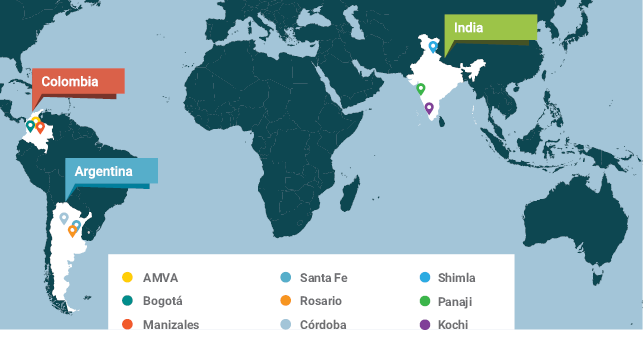
Baseline in numbers
If we continue business-as-usual
Where are the emissions from?
So, how did we get there?
The emissions chart shows that we need to apply sustainable principles to move goods in the cities. The why is clear! The how remains the big challenge. By understanding various challenges related to urban freight, we can unveil the most impactful intervention points.
- There is an increasing awareness and focus on freight at the national level in all three countries, albeit uneven distribution of efforts among countries. The vision on sustainable freight stimulates local change.
- Air quality and emission reduction are one of the key drivers for sustainable urban freight in the cities.
- Policies geared towards the adoption of low carbon fuels for urban logistics operations through stricter emission standards and fuel economy standards are gaining prominence.
- High-quality infrastructure is a precondition for the provision of efficient transport services for both freight and passenger movements, however, the infrastructure capacity consumed by freight activities is often overlooked.
- It is critical that they use data to evaluate and make science-based decisions. However, there exists a range of common urban freight data issues.
- Almost unexpectedly, irrespective of city-scale or location, the profile of urban freight interventions is often piecemeal, place-based and limited to a certain group of stakeholders. A larger effort is needed from the various regulatory agencies in the cities to close the regulatory gap.
How to reverse this trend?
Whether from the point of view of the transport activity, modal distribution of flows, environmental impacts, or political responsibility and public organization of the supply chain, urban logistics is at center of attention. Here is what city leaders could do to reduce emissions from the sector.
A combination of measures- Carrot and stick
Policymakers could adopt and implement a portfolio of carrots and sticks to drive faster decarbonization of freight transport. Based on the knowledge and experiences gained, a coherent and comprehensive package of mutually reinforcing measures that are tailored to the city context is the key to a successful and effective freight related regulatory program.
Leveraging data to make evidence-based decisions
While new technology offers the possibility to collect data at relatively low cost, a stronger collaboration between the public sector and private companies could mitigate the data availability issue considerably. Apart from data collection, it is critical to develop and establish robust methodologies for logistics emission calculation to support freight users with adopting the emission reduction targets.
Working collaboratively across regions and industry
Often, there are silos between different stakeholders and there is a lack of shared vision. By bringing multi-stakeholders onto the same table, it can be ensured that they can be heard and can participate in a constructive fashion, to improve the freight system.
Integrating passenger and freight transport
With cities making announcements on zero-emission passenger vehicles and zero-emission zones, the momentum to push for freight to be included in transport planning is now. Policy makers should take a holistic approach to addressing passenger and freight transport together and identify if policies, infrastructure, business models and energy sources serve both sectors.
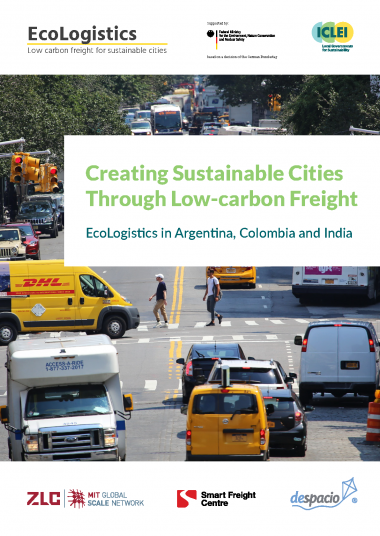
Published in March 2021
Creating sustainable cities through low-carbon freight: EcoLogistics in Argentina, Colombia and India (EcoLogistics Report 2021)
Take action
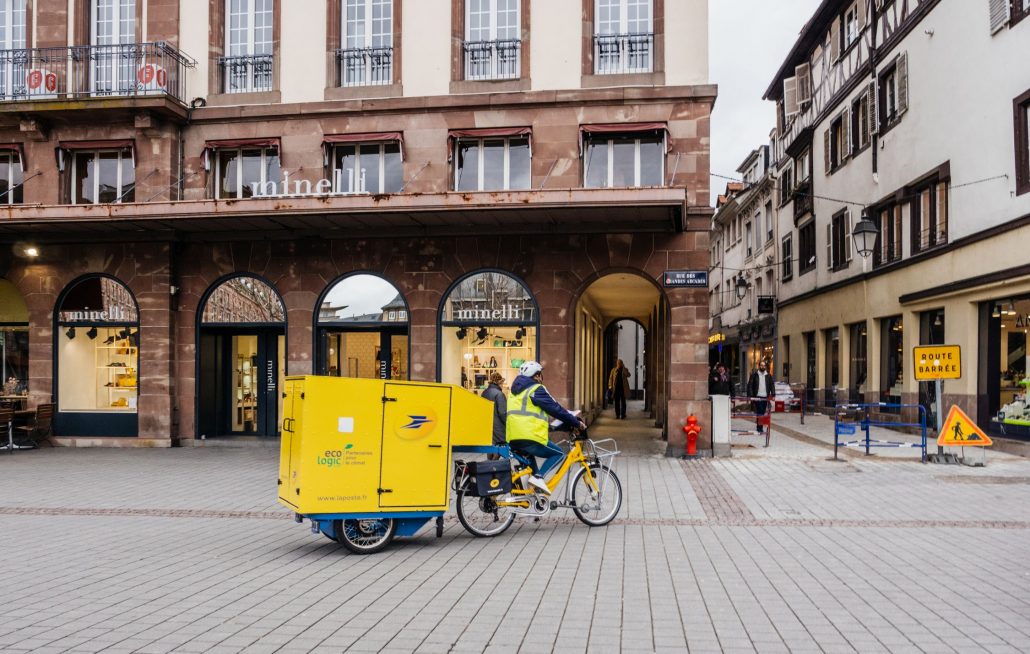
- Allocate staff and resources to manage freight
- Promote multi-stakeholder decision making structures by bringing stakeholders in both public and private sectors onto the same table
- Create a vision for sustainable urban freight – here are 8 foundational Principles
- Plan and implement a Sustainable Urban Logistics Plan (SULP) with S.M.A.R.T. goals
- Contribute to national and international policies through national recommendations and reporting to New Urban Agenda, Agenda 2030 and Paris Agreement

